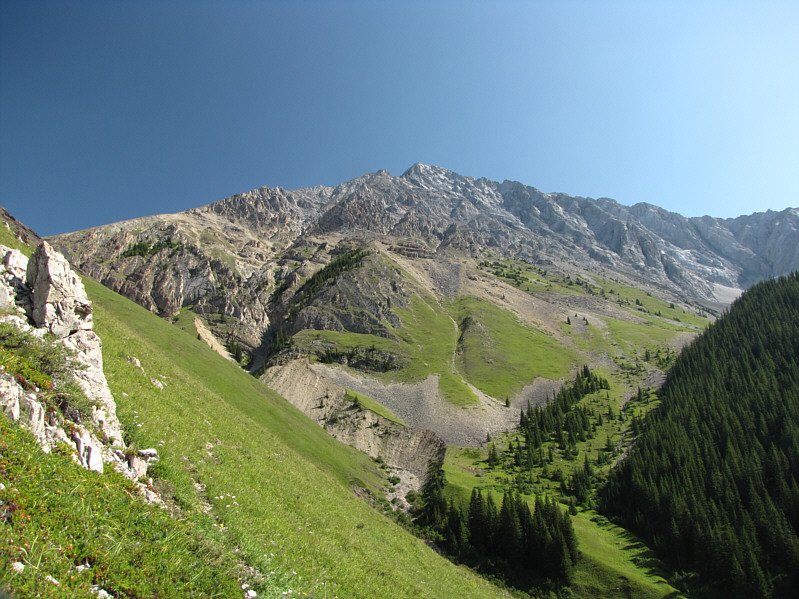 |
This is a foreshortened view of Mount Evan-Thomas from near where the
trail peters out. The valley to the right gives access to the
southwest gully. |
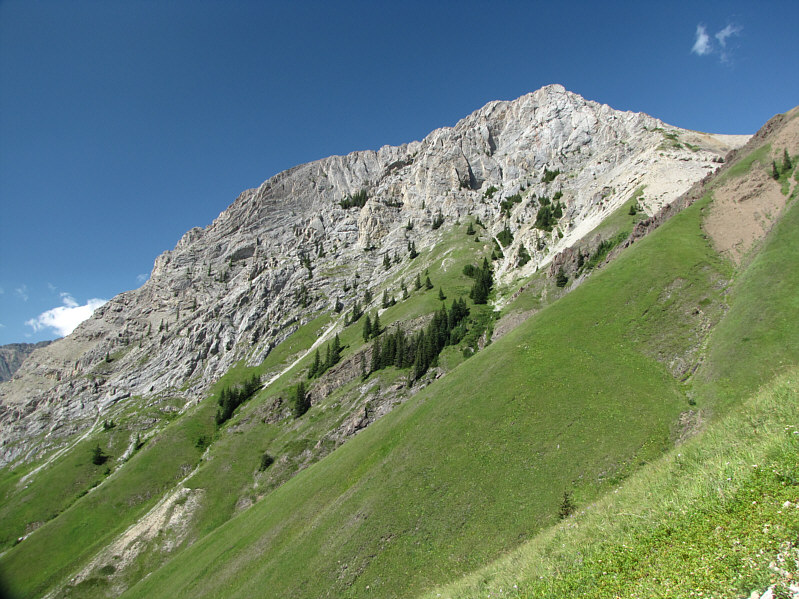 |
This is looking west to Grizzly Peak from the slopes of the upper valley. |
 |
This is an example of the steeply-tilted strata in the gully. |
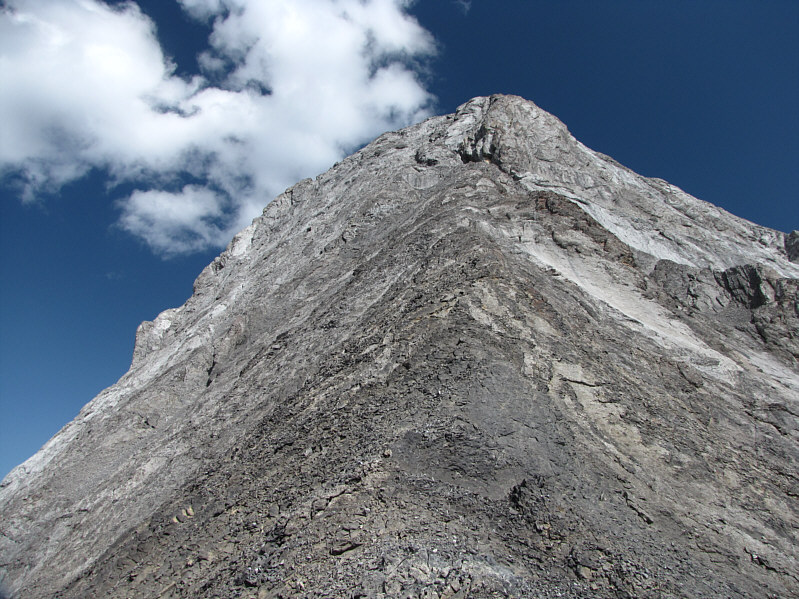 |
This is the summit block as seen from where the gully tops out on the
west ridge. |
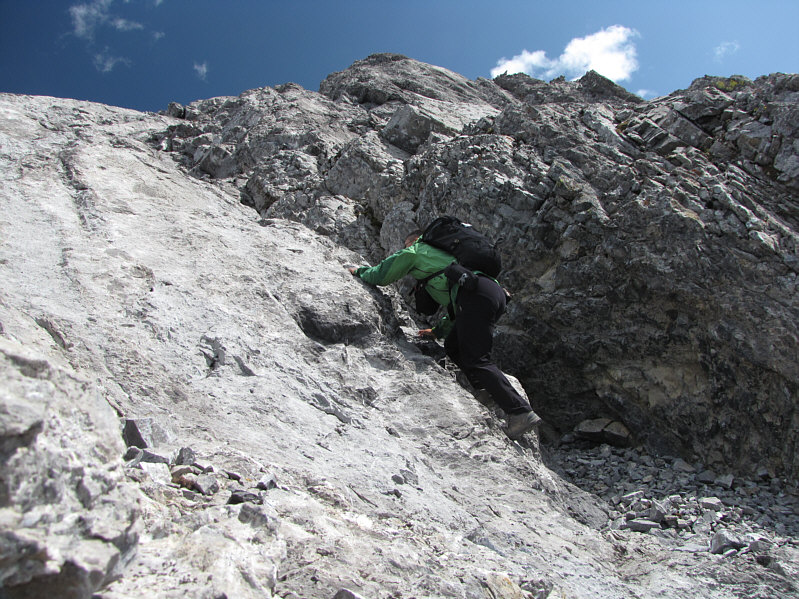 |
Sonny scrambles up the obvious crack just below the summit. |
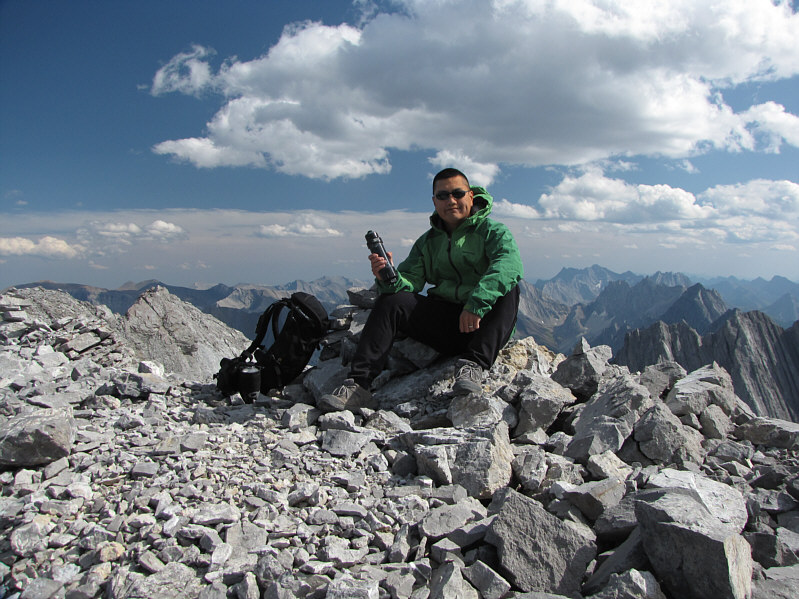 |
Sonny holds the register canister on
the 3085-metre summit of Mount Evan-Thomas. |
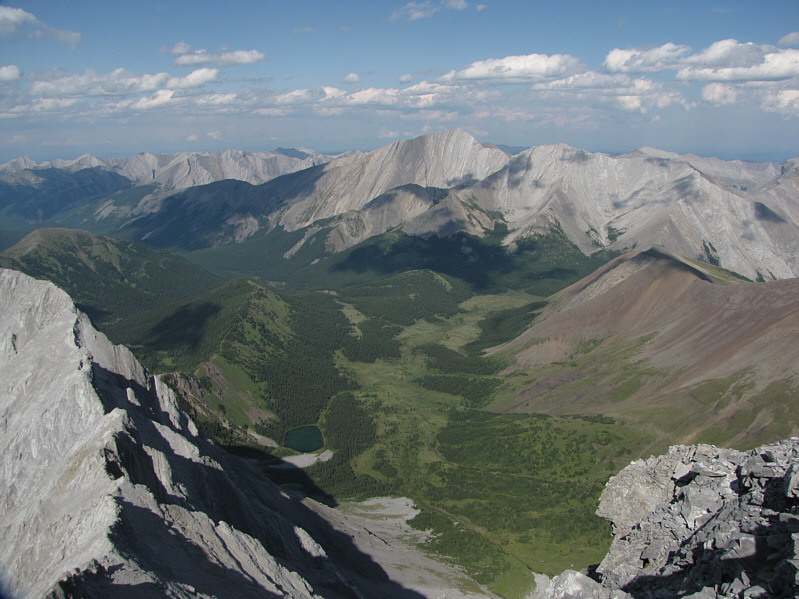 |
This is looking northeast toward the Fisher Range. Fisher Peak is
at centre on the horizon. Evan-Thomas Lake is also visible at
bottom left. |
 |
Mount Packenham dominates the view to the south. |
 |
Grizzly Peak looks diminutive to the
west. |
 |
The view to the northwest includes Opal Ridge and numerous peaks of the
Kananaskis Range. |
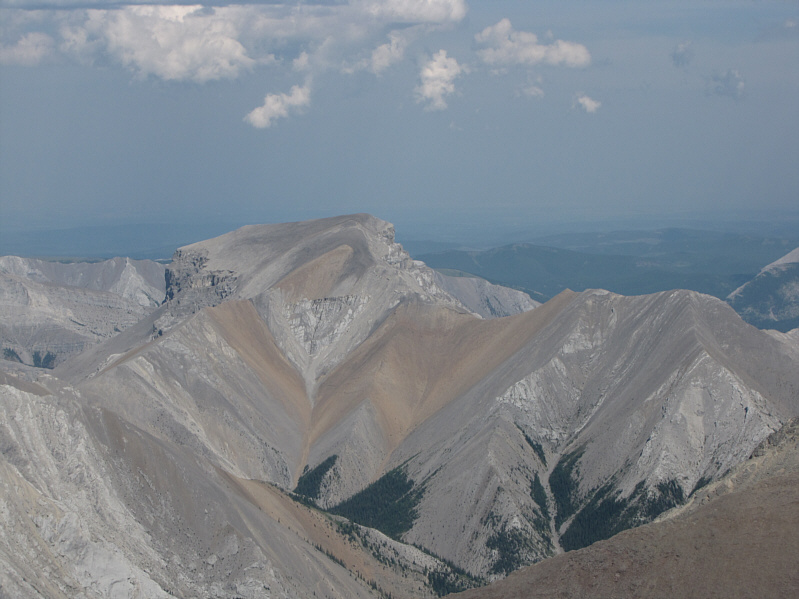 |
To the east, Mount Romulus looks unusual from this side. |
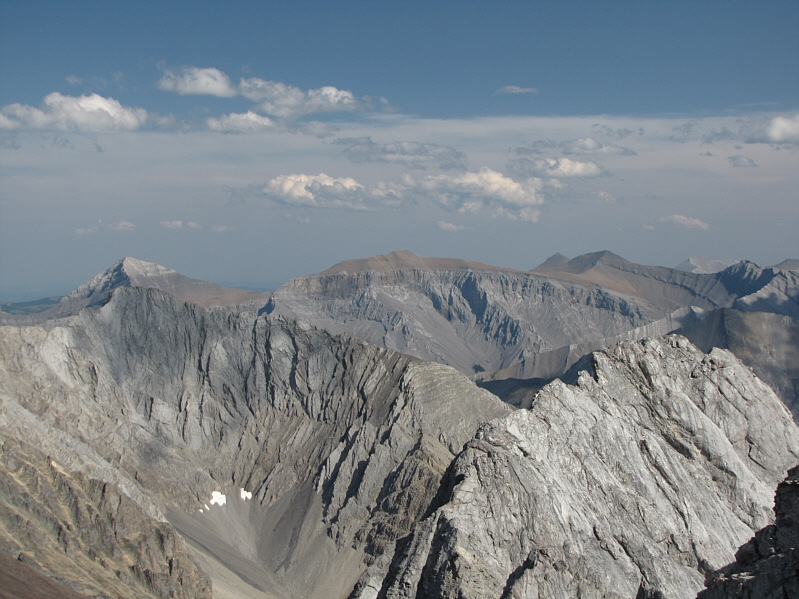 |
Also visible to the east on the horizon are (L to R) Mount Glasgow,
Mount Cornwall, Banded Peak and Outlaw Peak. |
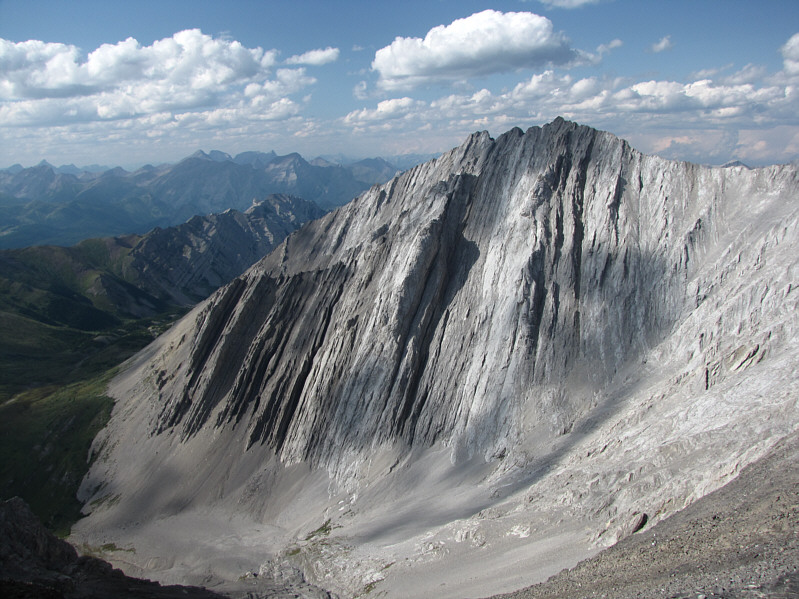 |
This is Mount Potts (unofficial name) as seen from the west ridge of
Mount Evan-Thomas. |
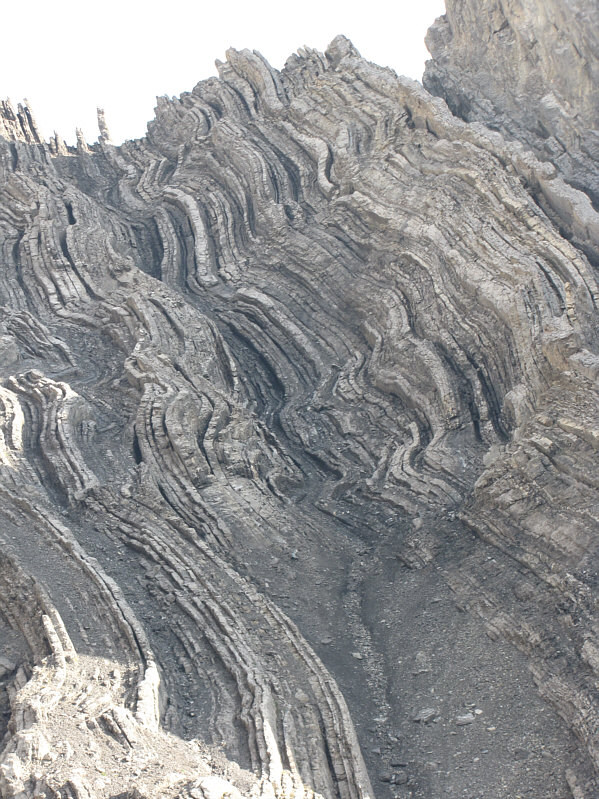 |
These are some interesting-looking strata on the north side of Mount
Packenham. |
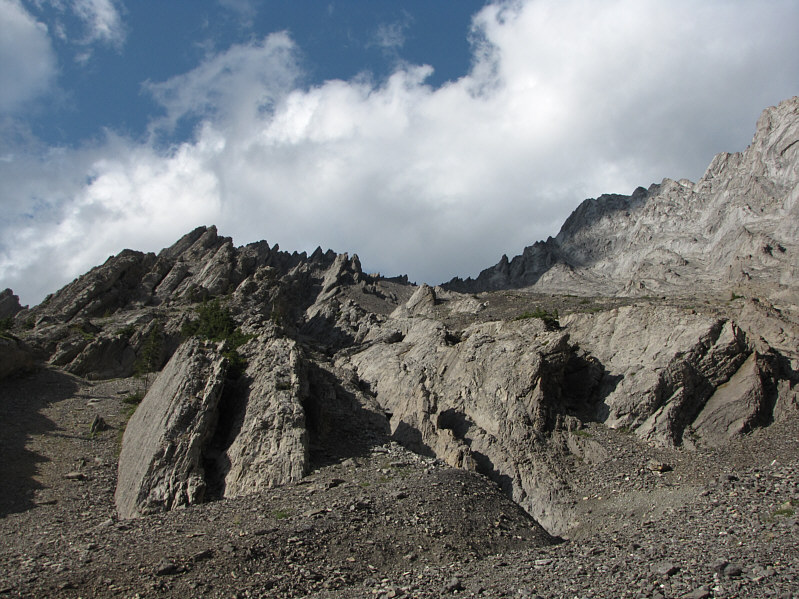 |
Here is a last look up the southwest gully from the bottom. |














